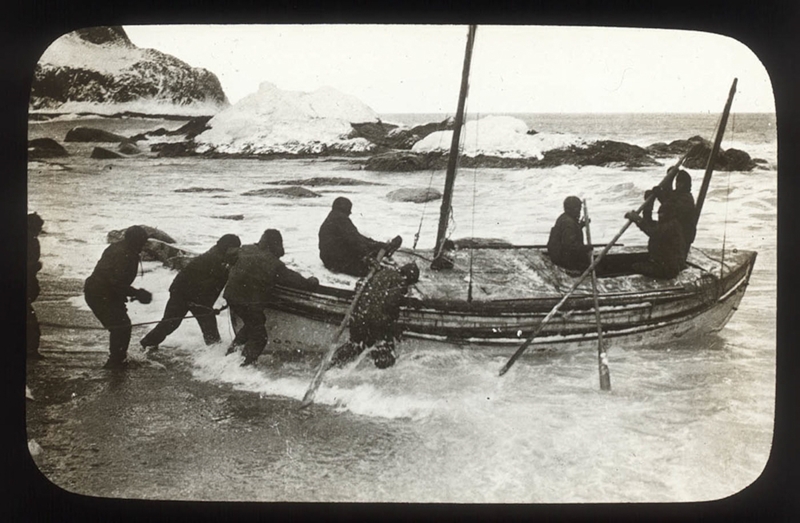This year, we are celebrating a very important centenary in Antarctic history: Sir Ernest Shackleton’s Endurance Expedition. Though he was not the first man to reach the South Pole – a title claimed by Roald Amundsen – his own Antarctic adventure was something entirely more challenging. He wanted to cross from one side of the continent to the other, totally on foot.
However, when his trip took a turn for the worst, his expedition became a journey of survival. Here we summarise this epic life-saving expedition, sharing his and his crew’s tale of resourcefulness and determination to survive – something we will pay tribute to on each of our 2016 tours of Antarctica.
Shackleton’s Endurance Expedition
Having failed to reach the Pole once before, Shackleton began planning his fateful journey in the early 1900s. Despite trouble brewing in Europe around this time, he was funded and allowed to leave with his ship, the Endurance. The crew sailed to the island of South Georgia (the whaling stations of which are now a unique Antarctic tourist attraction), planning to begin their voyage from the Weddell Sea and Antarctic Crossing, going via the Pole to the Ross Sea.
In December of 1914, the team encountered pack ice for the first time, and were forced to try and batter through it.
“All day we have been utilising the ship as a battering ram,” wrote photographer Frank Hurley in his diary. “We admire our sturdy little ship, which seems to take a delight herself in combating our common enemy, shattering the floes in grand style.”
Lees: “The shortage of paraffin is beginning to make itself felt…” pic.twitter.com/2nmBfCvFD6
— Ernest Shackleton (@EShackleton)
October 8, 2015
Things turn worse
However, in January 1915, the ice had grown too thick and the Endurance became stuck. Despite best efforts from the crew, which included many of them disembarking and attempting to chisel it away with iron bars, it would not budge, and the ship began to drift. This was the ominous scene right through the harsh Antarctic winter until spring rolled around again in November, when the boat was finally crushed under the weight. There were 28 men now stranded on thick Antarctic floes.
The crew began dragging their large wooden lifeboats in search of land, jumping inside them when the ice was thin enough to sail. After five months of hard travel, they happened upon Elephant Island, where a camp was set up.

The ‘James Caird’ was small, yet it had to fit five people and all of their supplies. Image credit: Frank Hurley. Mitchell Library, State Library of New South Wales
Going for help
Shackleton and select crew – Frank Worsley, Thomas Crean, Tim McCarthy, Harry McNeish and John Vincent – attempted to sail back to South Georgia (a distance of some 800 miles, or 1,287 kilometres) in one of the lifeboats, the James Caird. They battled huge waves, chilling cold and even frostbite, on a trip that lasted 14 days. Navigating with a sextant proved nearly impossible, but yet somehow they managed to traverse one of the world’s deadliest oceans and arrive at their destination.
However, despite finally landing, the hardship was not yet over. The men had to tramp 35 kilometres over unmapped rocky peaks, slippery glaciers and even through a waist-deep, ice-cold stream (and subsequently down a 9-metre waterfall) to reach the whalers, and hopefully rescue. The date was now May 20, 1916 – over a year after the Endurance initially got stuck.
Pack ice proved too thick for the rescue party’s whaling boat to get through to the stranded crew, and again for a further two tries. In the end, Shackleton had to borrow a tug from the Chilean government, which was to be their fourth attempt at breaking through. Eventually, they succeeded, and the crew were saved. Amazingly, none of the 28 men died on this elongated journey!
On Aurora Expeditions ‘In Shackleton’s Footsteps‘ journey, you’ll see South Georgia, the Weddell Sea and, sea state permitting, Elephant Island (where the crew remained for over a year), alongside fascinating historical insight from experts.

